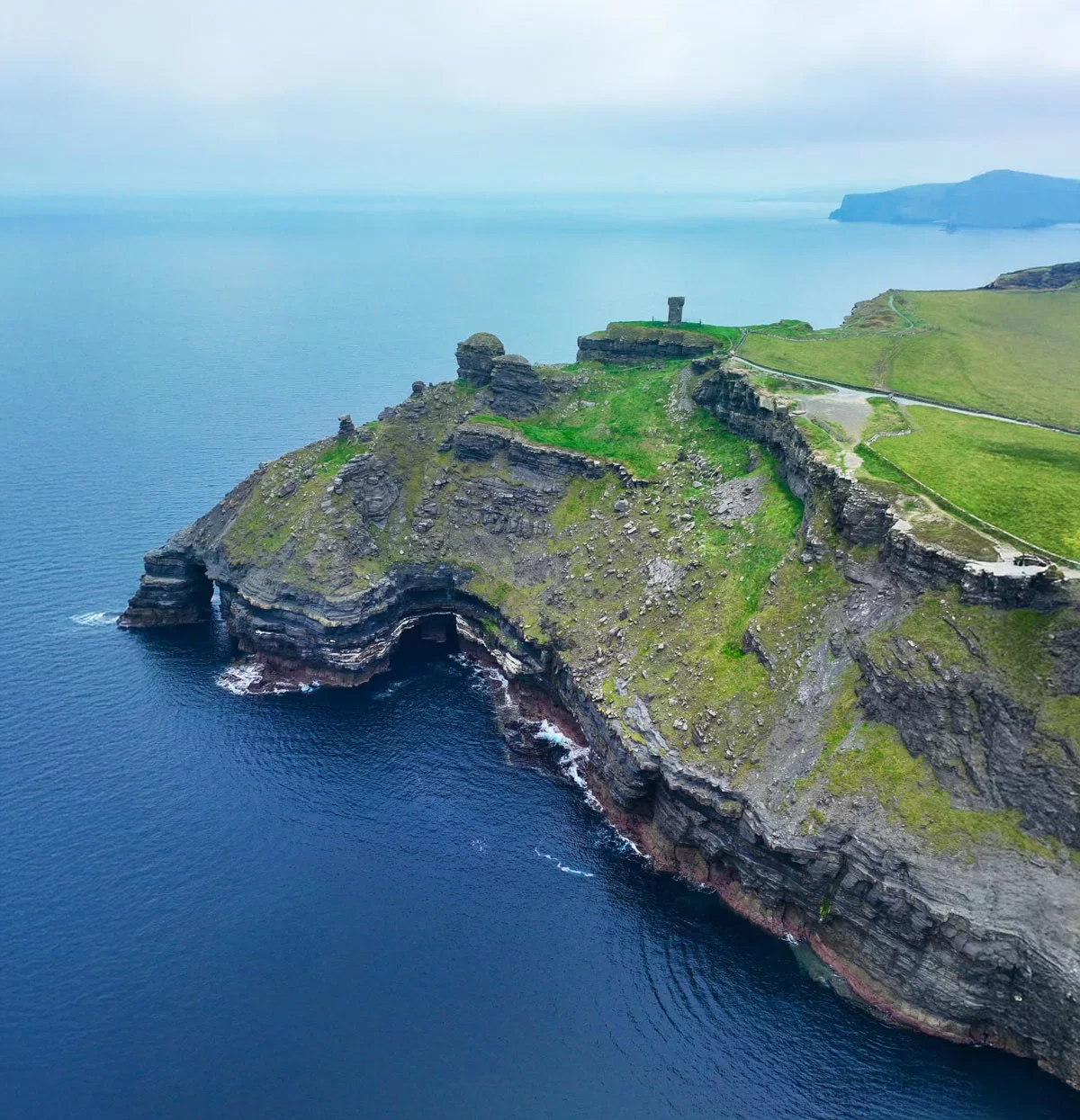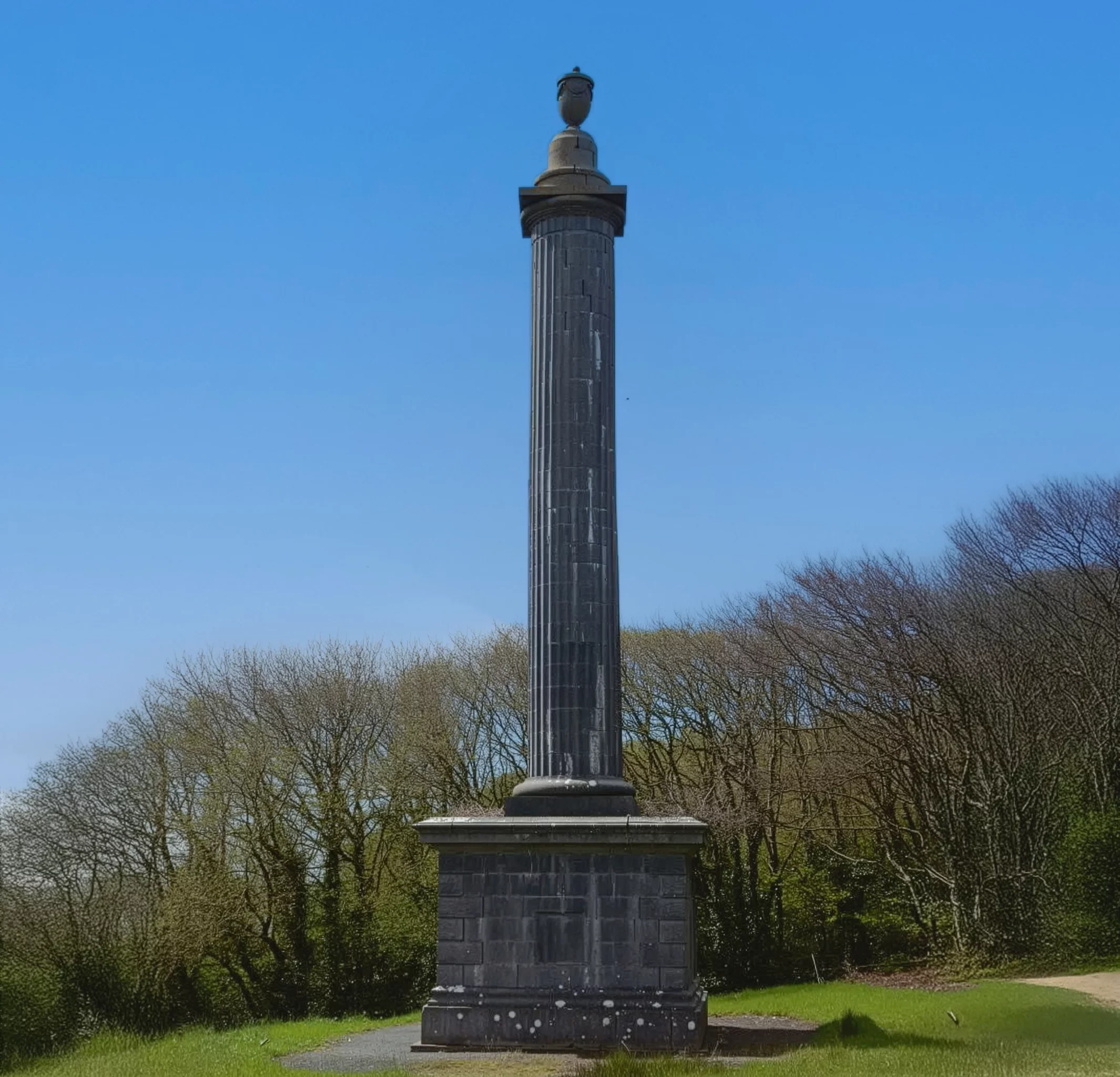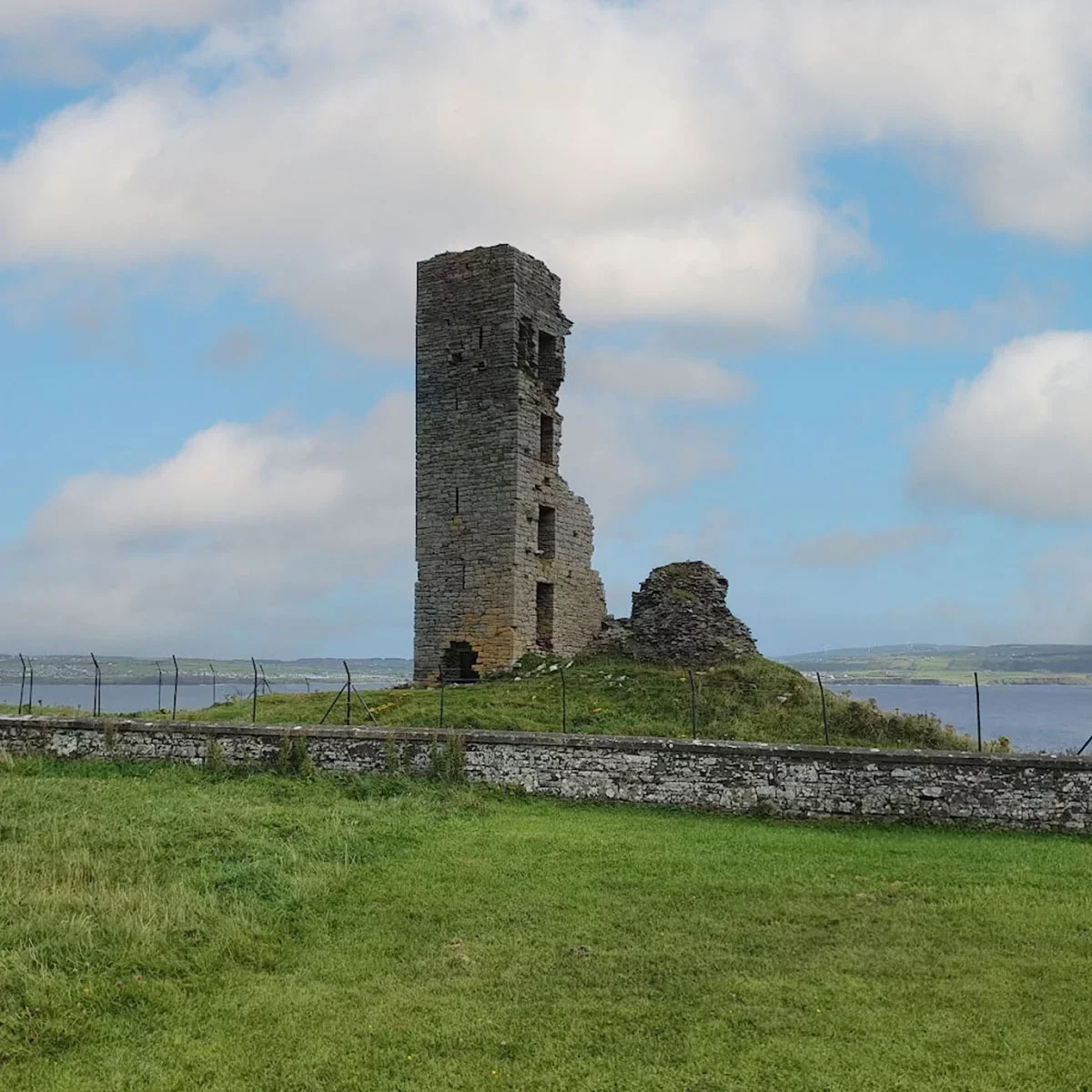Hag’s Head & the Moher Signal Tower - A Story Told by Stone

Walk far enough along the southern spine of the Cliffs of Moher, and the land begins to narrow. The fields grow smaller, the walls lower, the path rougher underfoot. Ahead, the horizon seems to stop, cut cleanly where the cliff face falls into the roaring Atlantic. This is Hag’s Head — the place where the land ends, and the stories begin.
The name itself is enough to stir the imagination. To the fishermen of old, sailing homeward into Liscannor Bay, the headland looked like the profile of a woman’s face gazing endlessly out to sea. They said she was Mal, the hag of legend, caught forever in the stone. Her story is one of longing and pursuit: Mal fell in love with the warrior Cú Chulainn, whose beauty and bravery were unmatched. But Cú Chulainn spurned her. He fled along this same coastline, leaping from rock to rock with the agility of a deer. Mal gave chase, her cloak streaming behind her, her feet pounding the earth. She leapt where he leapt, climbed where he climbed, until at last he escaped her grasp across the waters of Liscannor Bay. Mal hurled herself after him — but the waves betrayed her. She was dashed against the cliffs, her body claimed by the sea. Only her face remained, pressed into the stone of Hag’s Head, a warning and a lament carved by the hand of fate.
But Mal was not the first to leave her mark here. Long before Cú Chulainn’s tale was ever sung, this headland was a fortress. Archaeologists trace the outlines of a prehistoric promontory fort that once enclosed the very edge of the cliff. Imagine it: earthen ramparts cutting across the narrow neck of land, a small community sheltered within. From their walls they could see whales surfacing offshore, storms massing over the Atlantic, enemy raiders’ sails glinting on the horizon. To live here was to balance between safety and danger, rooted in land but always at the mercy of sea.
Centuries passed. The fort fell silent, its banks softened into the turf. But the headland’s value never faded. In the early 1800s, as Napoleon Bonaparte threatened to sweep across Europe, Ireland braced itself for invasion. The British built a chain of signal towers along the coast — stone watchhouses designed to spot approaching fleets and pass warnings inland. Hag’s Head was chosen as one of these posts. Soldiers were stationed here, their eyes fixed on the horizon. By day, they hoisted flags; by night, they lit lamps, each signal leaping from tower to tower in a code of vigilance. Though Napoleon never came, the Moher Signal Tower still stands, roofless but stubborn, a square block of stone against the wild sky.
Pause there, at the tower, and you begin to hear the stories in the wind. The ghost of Mal whispering her grief. The cries of sentries scanning the horizon for sails that never arrived. The laughter of prehistoric children who once ran between earthworks that are now only faint ridges in the grass. Hag’s Head is not one story — it is many, layered like the cliffs themselves, each one built upon the other.
Today, you can walk to Hag’s Head on the loop trail guided by local farmers, crossing stiles and fields that roll towards the cliff’s sudden edge. The air smells of salt and wildflowers. Atlantic gales tug at your clothes. And then, suddenly, the land falls away and the whole spine of the Cliffs of Moher unfurls before you: O’Brien’s Tower a tiny dot in the north, seabirds wheeling and diving, the sea churning dark and endless below.
The tower is quiet now, its walls open to the sky. Sheep graze nearby. But if you linger, if you let the place seep into you, you begin to feel why people have always been drawn here. Hag’s Head is not just scenery. It is a stage where myth, history, and memory play out together — a reminder that Ireland’s wild places are never empty, but alive with the voices of those who came before.
To stand at Hag’s Head is to stand at the edge of the world, where stone remembers witches, warriors, sentries, and settlers — and where the story of the cliffs is still being written in wind and wave.
Other Heritage sites

The O’Brien Column - Power, Pride, and Stone at Liscannor
Standing proudly above Liscannor Bay, the Cornelius O’Brien monument honours the man often described as the father of Irish tourism. O’Brien was the local landlord in the 1800s and is best remembered for opening up the Cliffs of Moher to visitors, creating paths, walls, and viewing points that helped people enjoy the scenery safely. His efforts brought early tourism to the area and supported local employment during difficult times. The monument, overlooking his former home at Birchfield and the O’Brien’s tower at the cliffs, continues to celebrate his lasting impact on both Liscannor and the wider Clare landscape.

Liscannor Castle Ruins - Stronghold of Stone and Shadow
The ivy-clad ruin of Liscannor Castle stands as a proud reminder of the village’s medieval past as a Gaelic stronghold. Built in the 16th century by the powerful O’Connor clan and later controlled by the O’Briens, this six-storey tower house was both a fortress against rivals and a home filled with life. Though abandoned for centuries, its broken tower remains a beloved landmark, a romantic silhouette against the Atlantic sky that holds the stories of chieftains, feuds, and the families who once ruled at the edge of the sea.
Ready to Explore Liscannor?
Questions? Need directions or recommendations? We’re here to help you make the most of your time in Liscannor.